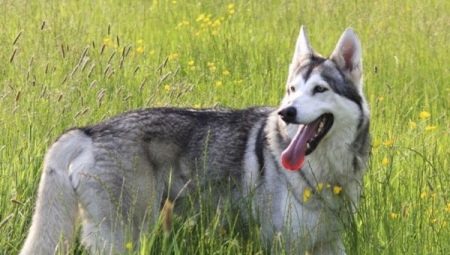The Northern Inuit Dog is a unique pet. It amazingly combines the harsh look of a wild wolf and the devotion of a friendly companion. The breed has not yet been officially recognized, but this does not prevent charming beauties from gaining popularity among dog breeders around the world. Consider the features of Inuit in more detail.
Origin history
The breed has no interesting history of nucleation. This is just a hybrid, bred in Canada at the end of the XIX century. Breeders decided to create a dog that looks like a wolf. At the same time, aggressiveness was not expected. On the contrary, representatives of the new breed should have become affectionate and friendly.
The experiment involved German shepherds, husky dogs, Alaskan Malamutes. This excellent gene pool was also complemented by an Inuit native dog. It was her external features that caused similarity with the wild inhabitant of forests.
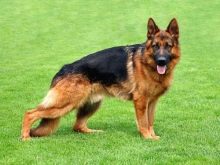
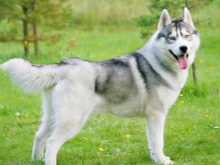

The result exceeded all expectations. Pets turned out to be strong, intelligent, with a complaisant character and intelligent behavior. All this was supplemented by a spectacular brutal appearance, which has a striking resemblance to a wolf.
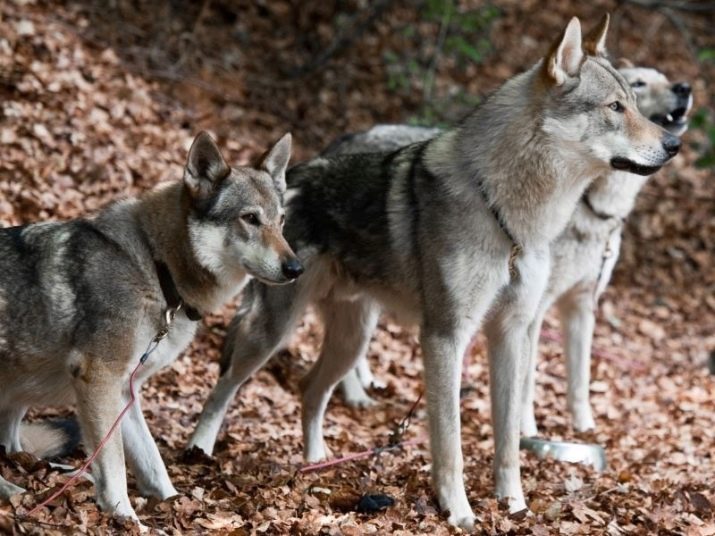
Nonetheless The new breed did not receive the support of dog handlers. The fact that the creation of hybrids is not welcome. In addition, the situation is exacerbated by the participation in the crossbreeding of outbred indigenous individuals. therefore specialists do not risk giving guarantees of the mental stability of hybrids.
To date, the northern Inuit dog is not officially registered and does not have approved standards. However, this did not stop fans of "domestic wolves" to establish a club in the UK dedicated to this species.The organization seeks to increase the popularity of the breed, to increase the number of its representatives.
Perhaps in the future, Inuit will be recognized at least as an experimental breed.
It is worth noting that there is another theory of the emergence of wolf-like hybrids. Some believe that the indigenous people of Canada wanted to bring working dogs. They needed strong, hardy unpretentious pets. Moreover, they had to obey the person and not show aggression in relation to other animals. According to this version, people crossed outbred dogs with wolves. However, genetic research completely refutes this fantasy. It is proved that there are no wolf genes in northern Inuit dogs.
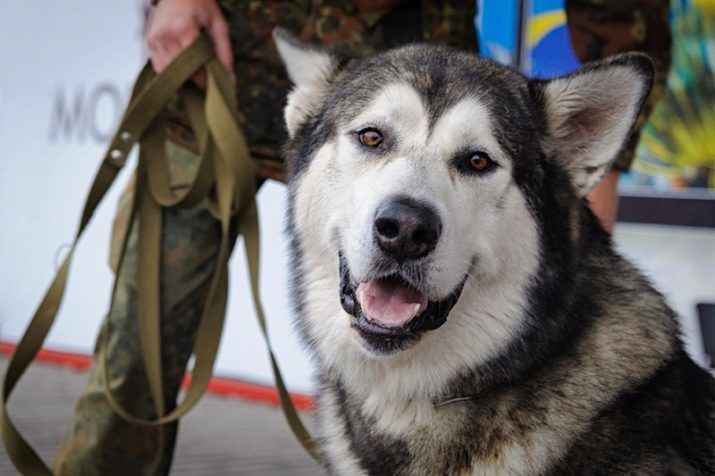
Description
Despite the lack of a breed standard, some common features characteristic of individuals of this species can be distinguished. Animals are large in size. In growth, they reach from 60 to 75 cm. The weight of adult dogs varies from 25 to 50 kg. The males are, of course, larger and wayward. Girls are more fragile and calm. Externally, dogs are very similar to wolves.
- Head. The skull is medium in size, wedge-shaped. The muzzle is narrow, elongated. The nose is usually black. The jaws are strong, the bite is “scissors”. The lips are pigmented dark. The eyes are almond-shaped, beautiful. Color varies (individuals with amber-yellow, hazel, blue eyes are found). The ears are large, erect, have the shape of a triangle.
- Body. The physique is harmonious, proportional. The neck is long, muscular. The back is straight, with a pronounced withers. Belly tightened.
- Limbs. The legs are long, strong, straight. They stand parallel to each other.
- Tail straight, well pubescent, freely hanging. At times of excitement, it can rise and take the form of a saber. A tail twisted in a half ring or bagel is not allowed.
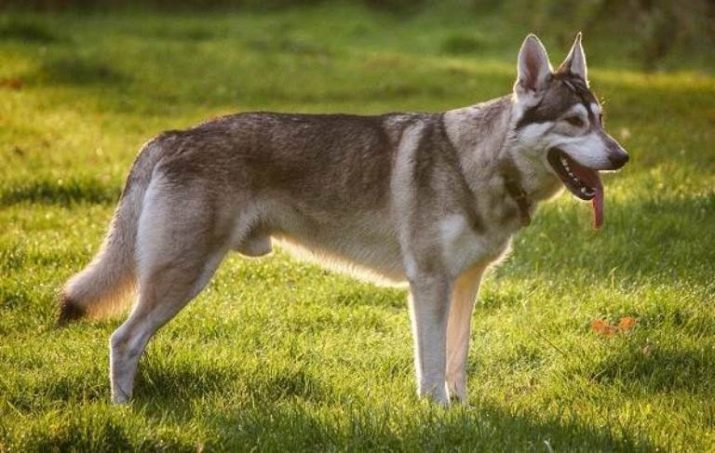
Inuit wool is harsh, double (there is an undercoat). Such a "fur coat" reliably protects animals from cold and wind, moisture. The hairs are medium length. On the neck, legs and tail, the coat is slightly longer.
The most popular is the "wolf" color. Also, until recently, a peculiar color “mask” on the face, characteristic of wild animals, was considered a sign of the breed. However, today other color variations are allowed, which are no less spectacular.
Dogs of this breed are snow-white, black, as well as two-and three-color. In addition to white and black, beige, red, gray, brown tones can be combined in the color. The transition between shades is always smooth and beautiful.
Contrast spots are not allowed.


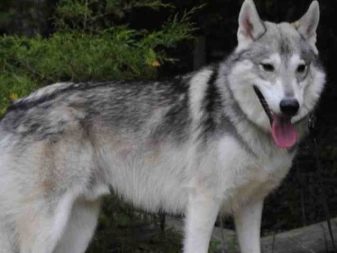
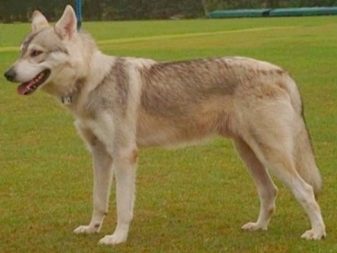
Character
As already mentioned, there is no aggression in the character of Inuit. These are companionable, kind and affectionate dogs. Animals love children though Leaving a pet alone with a small child is not worth it. The fact is that representatives of this breed are quite large and active. Having been amused, a dog can accidentally drop a baby.
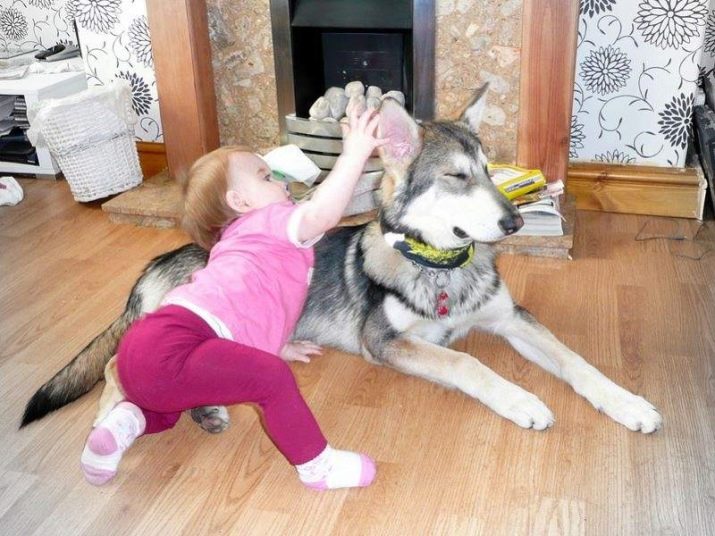
Inuit are very outgoing. They quickly become attached to the owners, and with their long absence, they get bored and worried. Therefore, if you often leave in connection with work or just love to travel, you should not choose such a pet as a friend.
To strangers, "domestic wolves" are kindly. To make a stern guard and watchman out of such a dog is possible only with proper training.
Despite the good nature and gentleness of character, the Inuit can be called proud and stubborn. Often they seek leadership. Therefore, it is important for the dog owner to immediately make it clear who the leader is in the family. Only having gained respect and authority, you can successfully educate and train a pet.
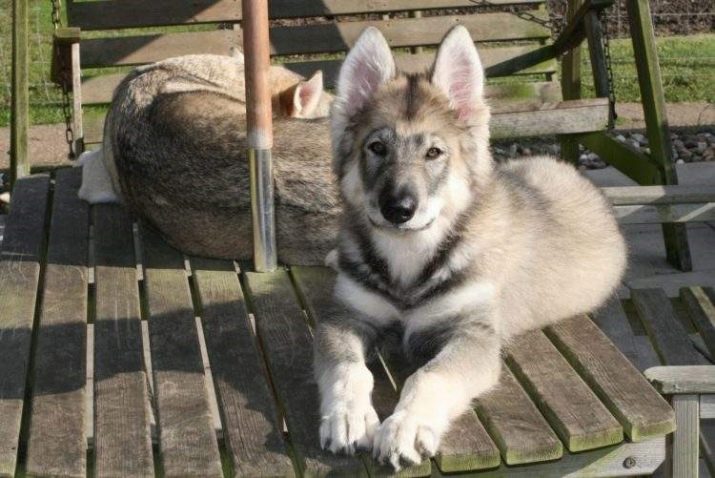
The desire for dominance can be manifested in the dog and in relation to other animals. Therefore, experts do not recommend having Inuit with other dogs or cats in order to avoid conflict situations.
Most owners speak of representatives of the breed as smart, loyal, subtle feeling companions.However, one must understand that hybrids are unpredictable. Therefore, the nature of each individual can have its own individual characteristics.
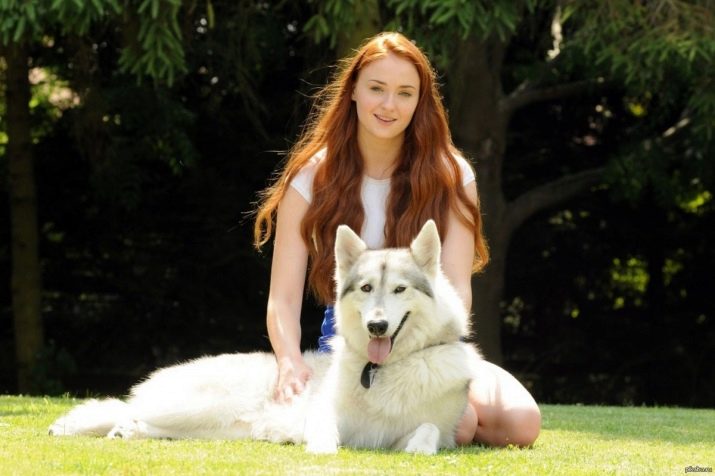
Content Features
Living in a private home with spacious grounds is great for an Inuit dog. Animals are very mobile, they need a place for games, running. The only important thing is to create a high fence so that the dog cannot escape. It is also worth considering that such pets tend to dig holes, so they can spoil beds and flower beds.

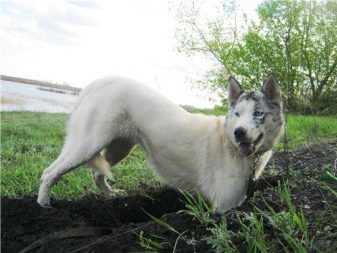
It is better to equip a sleeping place for a dog in the house, and in the afternoon let it out onto the street. If the owner decided to settle the animal in the aviary, he should have a canopy that protects from the heat of the sun and rain. Dogs are not afraid of cold due to thick coat.
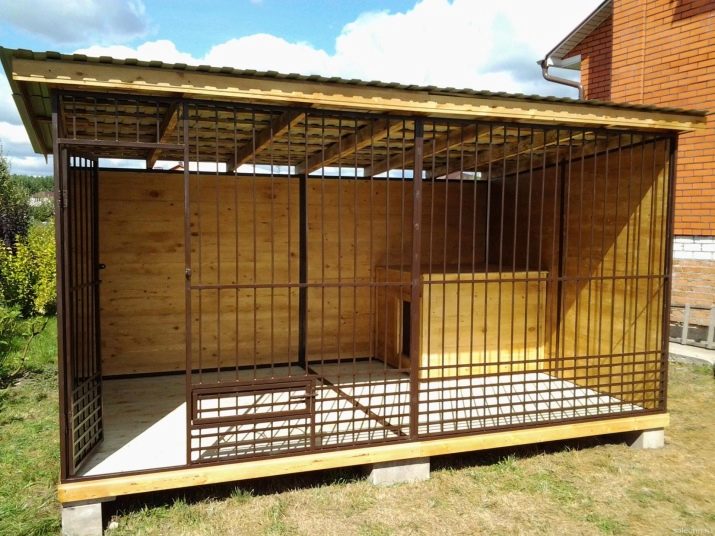
Keeping an Inuit in an apartment is not a good idea. A large dog will be cramped in a small room, she will have to walk often and for a long time (at least an hour 2 times a day). In addition, neighbors are unlikely to like the noise the dog makes. Representatives of this breed do not bark for no reason, but congee if left alone.
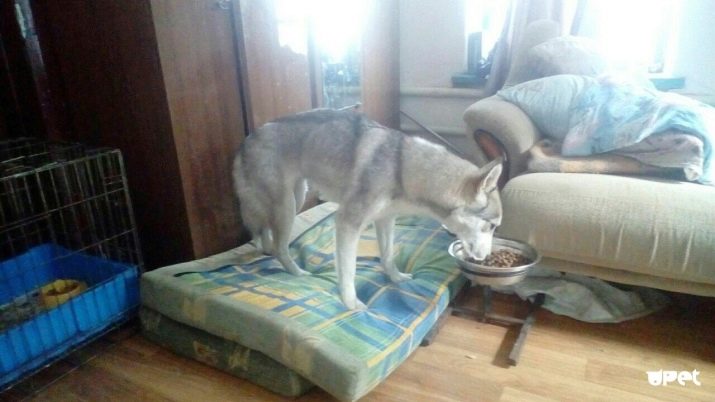
Anyway the dog should have a comfortable sleeping place away from noise (intuitive hearing is very sharp). It is also advisable to provide the pet with toys that can be nibbled. Be sure to have a bowl always filled with clean drinking water. Well and, of course, it is necessary to organize a balanced high-quality food.
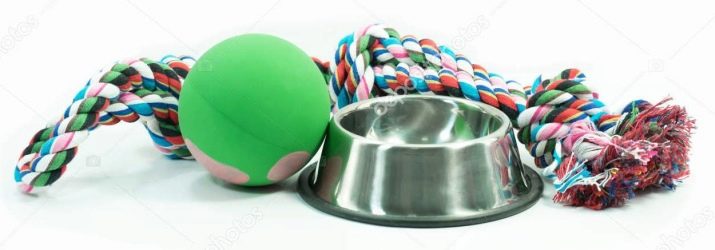
Dogs of this breed molt abundantly. However, the process does not last long and is infrequent (2 times a year). In such periods, the pet is combed daily. At other times, combing the dog twice a week is enough. Dogs don't need a haircut. It is only worth it sometimes to cut the hair on the paws between the fingers. This is usually done in the offseason and in winter.
The necessary hygienic procedures include regular checkups of the eyes and ears of the pet. This helps prevent ENT diseases. Teeth are cleaned with a special toothpaste and brush for dogs.
It is also advisable to give the animal a dental stick that removes tartar.
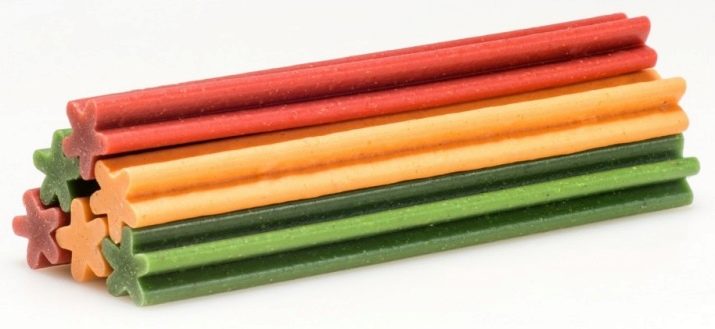
Claws need to be cut once every 3 weeks. If the dog lives on the street and the claws grind naturally, the procedure is carried out as necessary. Frequent water treatments are not required for the dog. They bathe the animal only with severe pollution. At the same time, dogs love to swim and enjoy diving in natural ponds in summer.
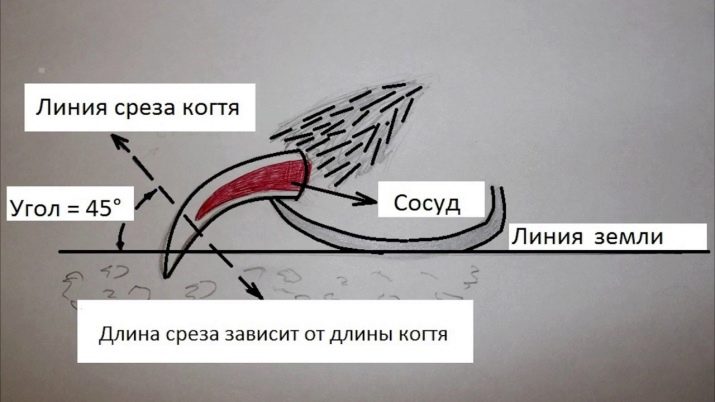
It is important to organize daily for the pet intense physical activity. This is necessary to maintain his health. An exception is the period of formation of the skeletal system. At this time, you need to be careful about the joints of the animal. It is advisable to control his behavior, not to let him jump down from elevations (for example, from a sofa). It should be stimulated and mental abilities of the dog - to play with him, to teach different teams.
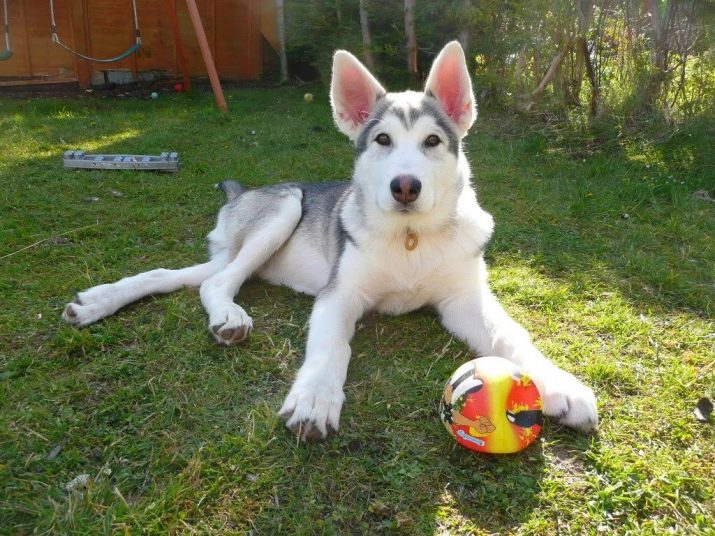
When walking in the city, it is important to be vigilant. Having become interested in something, the dog may run away, so it is undesirable to let him go from the leash. The need for a high, thoroughly made fence around the adjacent territory is also connected with this.

As for the health of such dogs, there are no statistics on this subject, as individuals are not purebred. Therefore, it is important to conduct timely vaccination of a pet, periodically visit a veterinarian for a routine examination. When receiving a puppy from a kennel, you should request a vaccination card. Foreign organizations also provide x-rays (hybrids have joint pathologies).
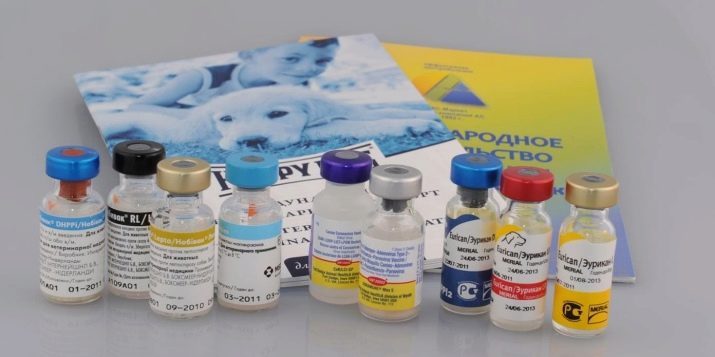
What to feed?
The rapid growth and vigor of the Inuit necessitates a balanced diet. Animals should receive a lot of proteins, fiber, vitamins. However, it should be borne in mind that hybrids are often allergic to certain dry foods. therefore It is important to pay attention to product quality.
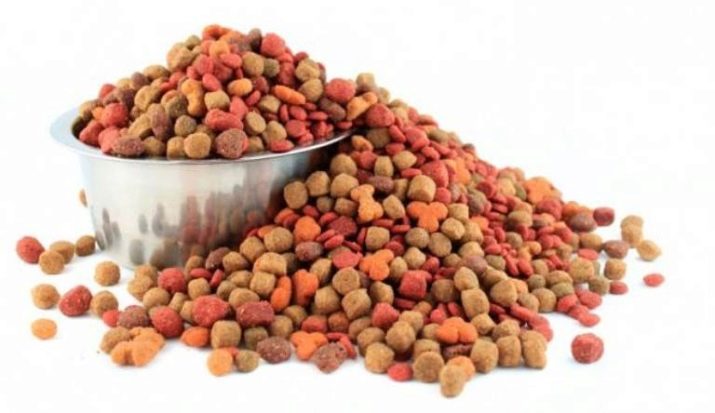
Elements of a natural diet can also cause an undesirable reaction, for example, poultry.It is better to give the dog other types of fresh meat. Also in the menu you need to include boiled cereals. The most useful buckwheat, rice, corn. Do not ignore vegetables and dairy products.
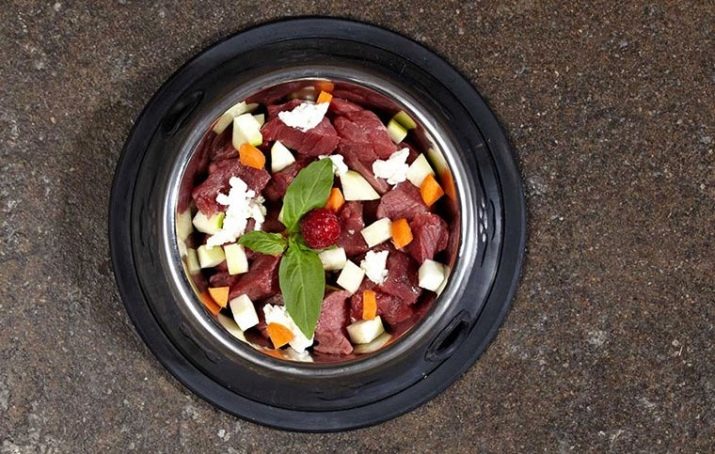
The optimal calorie content and portion size are determined by weight, age of the pet. The degree of activity of the dog also matters.
The appetite of the breed is excellent. However, with low physical activity (for example, when kept in an apartment or in old age), a too nutritious diet can lead to excessive weight gain.
Parenting and training
Inuit dogs are very smart. They are easy to learn, memorize and perform a large number of teams perfectly. At the same time, the educational process is not easy.
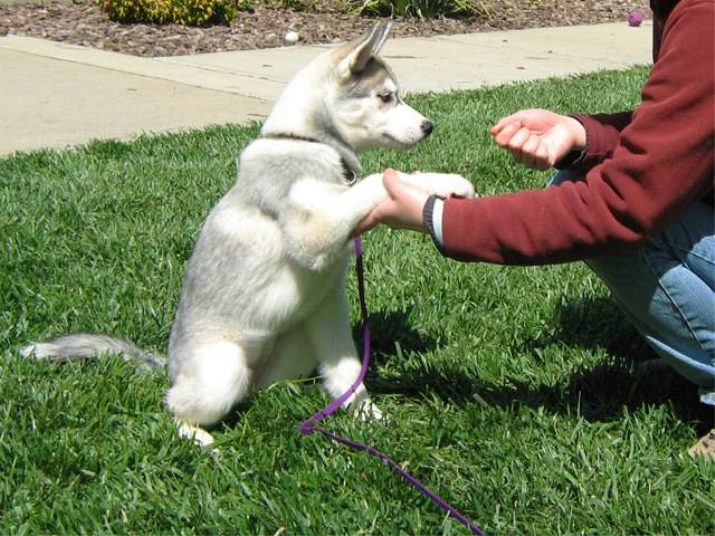
Animals do not tolerate rude screams. You can not punish, let alone beat a dog. The pet can stubbornly and ignore the team. But this happens only because of his innate desire for dominance. It is important to be patient. It is necessary to firmly, but calmly convey to the dog that the main thing is not him, to establish emotional contact with him.
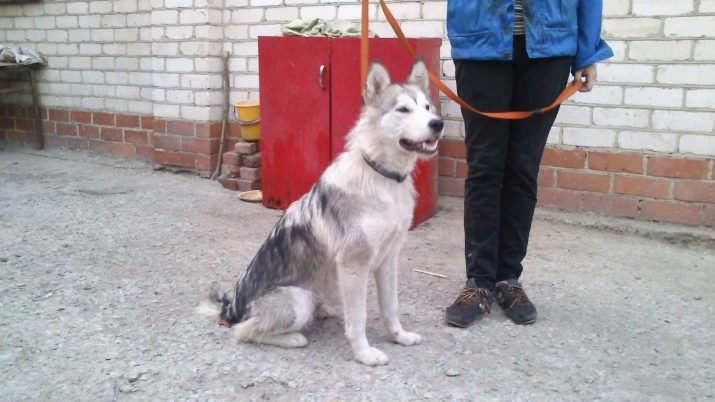
In training, one should adhere to consistency, principles of mutual respect. The process should not be boring and monotonous. Show imagination and ingenuity. Be sure to praise the fourth friend for success. This will be the best incentive for him. As a result, you can not only master the basic commands, but also learn complex tricks.
The best option is to take the dog to a dog club. Specialists will give the pet all the necessary knowledge, teach him how to behave, perform everything that is required of him. Trained Inuit participate in sports, can search for drugs and missing people, act as guides.
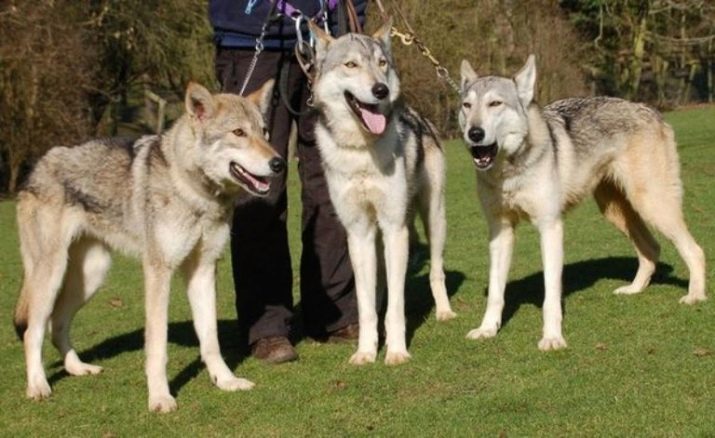
In conclusion, it is worth saying that an Inuit dog can be a great friend and companion for an active person with a strong character. However, inexperienced dog breeders raising such a wayward pet that requires early socialization may seem too complicated. Such people should choose an animal of a calmer and more obedient breed.
See how the Northern Inuit dog behaves on a walk in the next video.
